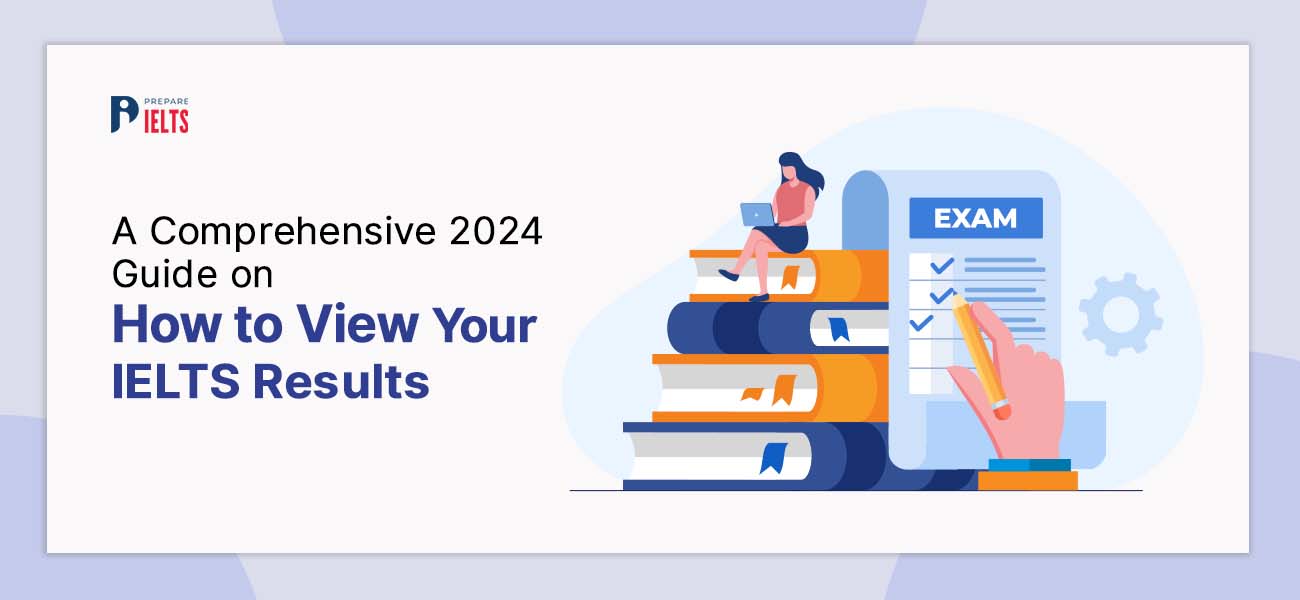
Introduction
If you have recently taken the IELTS exam, you might eagerly await your IELTS results to determine your next steps in your academic, professional, or immigration journey.
IELTS, the world’s most widely recognised English language proficiency test, assesses your language skills in four key areas: Listening, Reading, Writing, and Speaking. The results of these assessments are represented through a unique IELTS band score chart.
This comprehensive guide will walk you through the IELTS exam result process, help you understand the IELTS band score chart, and provide insights on how to view your IELTS scores effectively.
How to View IELTS Results Online?
It is very important to know the step by step procedure to check the IELTS Exam Result Online. It will help you to get your scorecard without facing any problems.
Below, you can check the procedure to view IELTS Results online.
Step 1 – To access your results online, visit the official IELTS website. Make sure you have your Test Report Form (TRF) number ready, which you received on the test day.
Step 2 – Enter your TRF number and the identification document number used during registration. These are necessary to verify your identity.
Step 3 – Your IELTS exam result will be displayed on the screen once you enter the required details. You can now view your scores and overall band scores in the four test sections.
Step 4 – You also have the option to print or download your Test Report Form for your records. This document is often needed for university admissions, job applications, or immigration processes.
How to Check IELTS Exam Results via SMS or Email?
In some regions, IELTS provides the convenience of receiving your results through SMS or email. To avail of this service, provide your mobile number or email address during registration. You will receive your results as soon as they are available.
How to Calculate IELTS Exam Score?
The IELTS scoring system is based on a band scale ranging from 1 to 9. Each band corresponds to a specific level of English proficiency, from non-user (Band 1) to expert user (Band 9). Here is how your scores are calculated:
Listening and Reading – Both sections have a maximum score of 9 each. The number of correct answers determines your performance in these sections. The total score is then averaged to give you your final band score for Listening and Reading.
Writing and Speaking – For these sections, trained IELTS examiners assess your performance. They evaluate your Writing and Speaking skills based on specific criteria and provide you with individual band scores.
Overall Band Score – Your overall IELTS band score is determined by averaging the band scores of the four sections. This final score provides a clear indication of your general English language proficiency.
Details on the IELTS Band Score Chart
Now, let’s delve into the IELTS band score chart to understand what each band represents:
Band 1-3 – Non-user: This level indicates very limited or no ability to use English for communication.
Band 4 – Extremely Limited User: You have only basic communication skills, and your language use is limited to familiar situations.
Band 5 – Limited User: At this level, you have partial competence in English, with the ability to handle overall meaning in most situations, although you may make errors.
Band 6 – Competent User: You have an adequate command of English and can use it reasonably accurately and fluently. However, some inaccuracies may still occur.
Band 7 – Good User: A band score of 7 indicates a good command of English. You use the language accurately and fluently, with occasional errors.
Band 8 – Very Good User: At this level, you have a very good command of English, using it accurately and fluently. Errors are rare.
Band 9 – Expert User: Achieving a band score of 9 signifies an expert command of English, where you fully understand the language, use it accurately and fluently, and can handle complex academic and professional tasks.
Interpreting Your IELTS Results for Different Purposes
Now that you have a grasp of how IELTS scoring works let’s consider how to interpret your results based on your specific goals:
Studying Abroad – If you aim to study in an English-speaking country, you should know the specific IELTS score requirements of your chosen university or program. Meeting these requirements is essential for admission.
Work or Professional Registration – Different professions may have specific IELTS score requirements. Healthcare professionals, for instance, often require higher IELTS scores due to the critical nature of their work.
Immigration – Some countries, such as Canada, Australia, and New Zealand, use IELTS scores as part of their immigration criteria. Meeting the required score for your desired visa category is crucial for a successful immigration application.
Language Proficiency Evaluation – Sometimes, individuals take the IELTS test to assess their English language skills without a particular goal. Your score provides a clear indication of your current language proficiency level.
Retaking the IELTS Test
If your IELTS score does not meet the requirements for your intended purpose, you can choose to retake the test. Here are some things to consider:
- Before retaking the test, invest time in comprehensive preparation.
- Schedule a retake as needed.
- IELTS test scores are typically valid for two years, so remember this timeframe if you plan to retake the test.
- It’s common for test-takers to improve their scores significantly after retaking the IELTS exam, mainly if they focus on addressing their weaknesses through targeted practice.
Conclusion
Your IELTS results are vital to your academic, professional, or immigration journey. Interpreting your IELTS score accurately, understanding its significance for your specific goals, and preparing thoroughly for the test are essential steps in achieving your aspirations.
The IELTS test assesses your language skills and opens doors to new opportunities. With the correct interpretation of your results, you can confidently take the next steps in your journey towards academic success, professional growth, or immigration to your dream destination.




